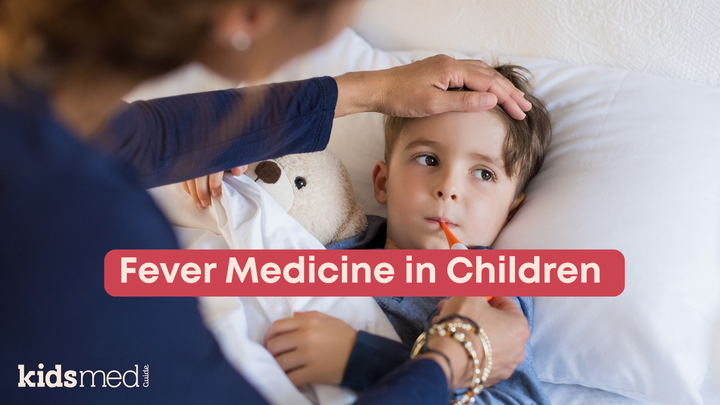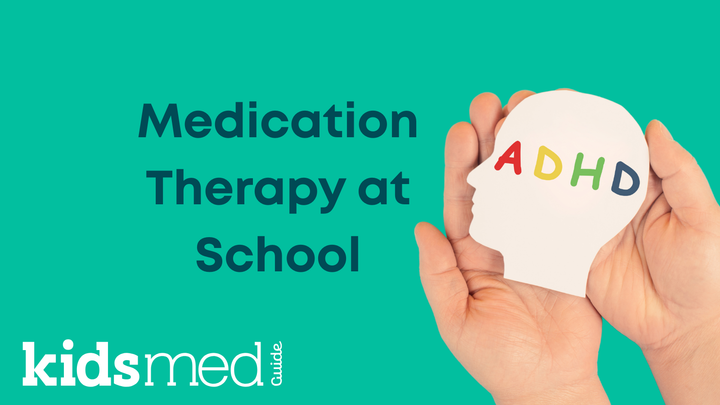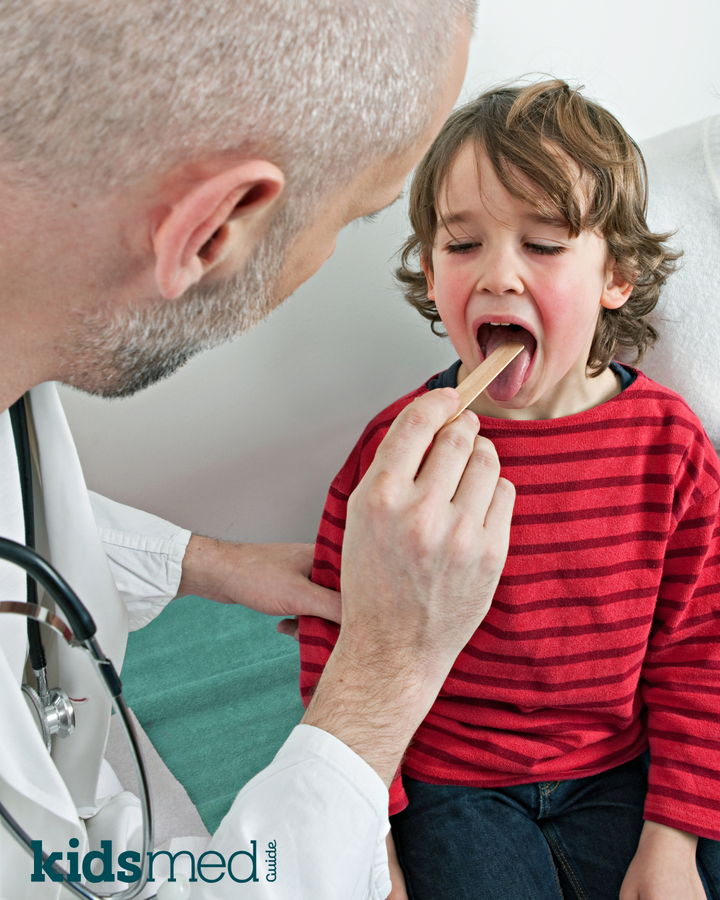First Fever of the School Year: Home Care and Red Flags
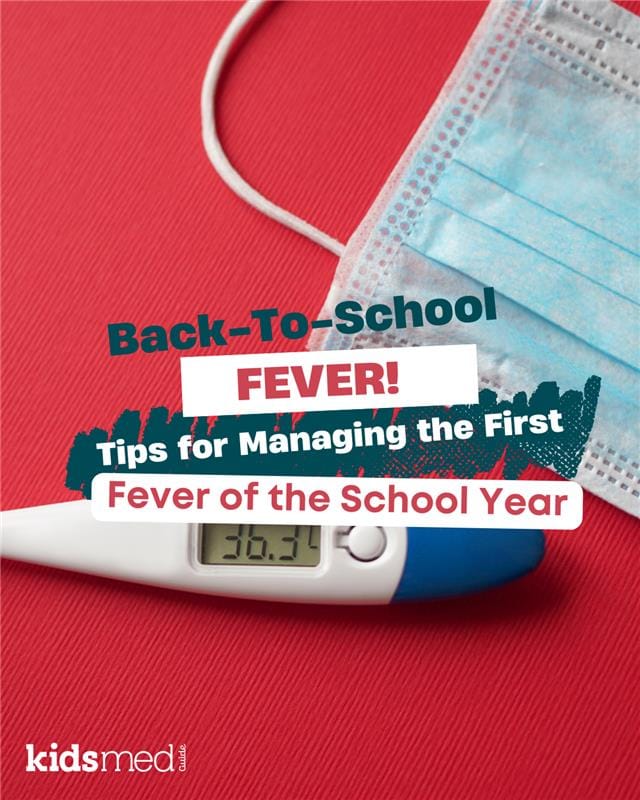
Parents, you know how it goes. The school year just began, and your child already comes home with flushed cheeks, a hot forehead, and the dreaded thermometer beep confirming a fever. Heck, if you’re really (un)lucky, the school nurse might even call before your morning coffee gets cold!
The first fever in children each school year can be especially stressful, mainly because it’s a reminder that fall and winter are riddled with illness and missed days of school and work. Understanding fever and how to treat it will help your child feel better! This guide explains home care for sick kids, safe fever medication options, red flags you shouldn’t ignore, and when to contact your pediatrician for help.
Why the First Fever Matters
That first fever of the school year often comes from the sudden germ-sharing extravaganza that is the classroom. (I don’t know how teachers do it. I’ve been in those classrooms, and the kids are cute, but MAN, what a petri dish!)
After a summer of outdoor play and smaller social circles, kids are suddenly back inside in close quarters with dozens of classmates. Viral infections like colds, the flu, or hand-foot-mouth disease flourish in this environment. For many families, the back-to-school season is also the first time in months they’ve had to dust off the medicine box, pull out the thermometer, and decide: is this something I can handle at home, or should we go to the pediatrician?
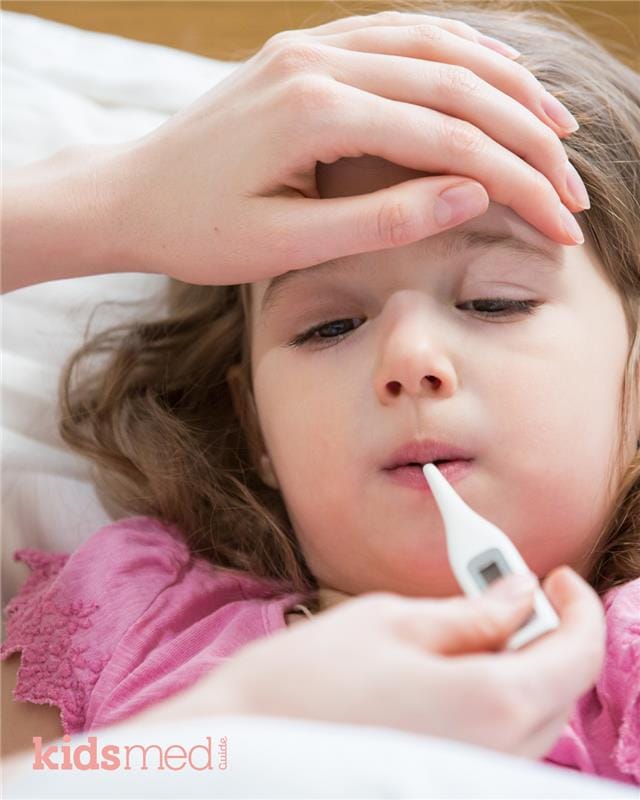
Home Care Tips for Sick Kids
Monitor temperature regularly
Use a reliable digital thermometer (such as an ear, temporal, or oral thermometer, depending on the age) and record the readings. Tracking patterns—such as how high the temperature gets, how often it spikes, and how long the fever lasts—helps you and your child’s provider make informed decisions. If you have multiple children or a lot going on, it can be hard to remember how long a fever has been present!
Provide safe fever medication for kids
If a fever-reducing medication is needed, two common options are acetaminophen and ibuprofen. Acetaminophen can be given every 4–6 hours. Ibuprofen can be given every 6–8 hours (but only if your child is at least 6 months old).
For stubborn fevers, you can consider alternating acetaminophen and ibuprofen. Always dose according to your child’s weight, following the directions on the medication bottle. Use the provided oral syringe or medication cup to measure doses.
Never give aspirin to children because of the risk of Reye’s syndrome.
Keep your child hydrated and rested
Fever can cause fluid loss and increase heart and breathing rates. This means that keeping your child hydrated and resting is very important. With any fever, encourage plenty of naps, sleep, downtime, and fluids! Ways to hydrate include sips of water, popsicles, soup broth, diluted juice, or oral rehydration solutions like Pedialyte.
Pay attention to how your child looks and acts
More important than the number on the thermometer is how your child is behaving. Are they cheerful, able to drink fluids, interactive, and comfortable? You can consider watching and monitoring the fever, as well as encouraging rest and fluids.
Is your child clearly uncomfortable, fussy, more subdued than usual, or unwilling or unable to drink fluids? That fever should be managed with a fever-reducing medicine (antipyretic) like acetaminophen or ibuprofen, along with rest and fluids. See our “Recognizing Red Flags” for more information on fever warning signs that require medical attention.
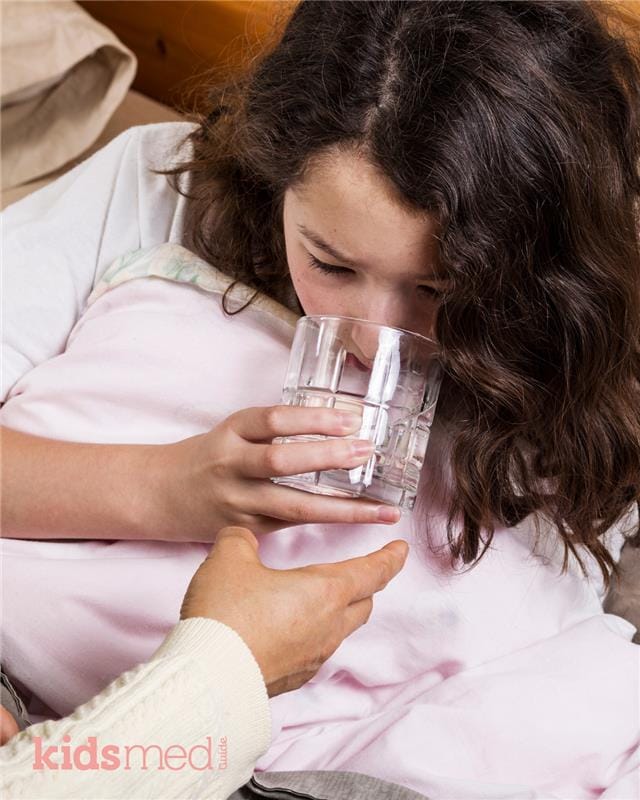
Recognizing Red Flags
Most fevers are mild and manageable at home, but certain symptoms indicate it’s time to seek medical care right away. Call your pediatrician (or emergency services if symptoms are severe and life-threatening) if your child has:
- A fever lasting more than 3 days
- A temperature above 104°F (40°C)
- Trouble breathing, rapid breathing, or wheezing
- Severe lethargy or unusual irritability
- A stiff neck or severe headache
- A widespread rash, especially if it resembles bruising
- Persistent vomiting or signs of dehydration (very dry mouth, no tears when crying, no urination in 8–12 hours)
- Is younger than 12 weeks old
- Has a medical condition where a fever can be dangerous, such as a heart arrhythmia or cancer
Trust your instincts. If your child is just not acting like themselves, or if something feels off, it’s worth a call!
When Can Your Child Return to School
Most schools follow the “24-hour fever-free without medication” rule. Children also need to feel well enough to participate in school activities. I know that sometimes my kids need an extra “rest” day even after their fever has broken!
It helps to keep notes: when the fever started, what medication was given, and any other symptoms. This information is useful for tracking the duration of illness and knowing when your child is cleared for activities, for your pediatrician if you need help, and possibly for your school nurse, who monitors illness trends in classrooms.
Preventive Measures for the School Year
Unfortunately, all kids get sick from time to time. Some seem to get sick more often than others, but nearly every child will spike a fever at some point during the school year. While you can't completely prevent illness, you can lower the chances!
- Encourage handwashing with soap for at least 20 seconds (the old standard is to sing the “Happy Birthday” song twice, but my kids have discovered that the chorus to “Shake it Off” also works… we’re in our Swiftie era over here).
- Keep childhood vaccinations current.
- Teach kids to cover coughs and sneezes with their elbow.
- Remind them not to share drinks, snacks, or lip balm with friends (easier said than done!).
Final Thoughts
The first fever in children during the school year doesn’t need to send your entire household into panic... hopefully, it’s just a quick virus! Think of it as a fun little welcome back to the school year gift.
Keep track of the fever patterns and, most importantly, watch how your child looks and behaves. Reach out to your medical provider if you are concerned. Encourage rest and hydration. If the fever needs treatment, give acetaminophen or ibuprofen as directed on the product label.
Frequently Asked Questions
What is considered a high fever in children?
A fever is usually defined as a temperature of 100.4°F (38°C) or higher. A “high fever” is 104°F (40°C) or above, which requires prompt medical attention. Remember, how your child appears and behaves is just as important as the number. If a fever is less than 104°F but they show warning signs such as lethargy, rapid breathing, severe pain, dehydration, etc., it is a medical emergency.
Can I give medication before seeing a doctor?
Yes, you can give acetaminophen or ibuprofen if your child is uncomfortable. Don’t wait for your appointment; the doctor will understand they were sick and will be glad you treated them! Bring details of the dose and timing with you if you see a provider.
How long should a fever last before seeking help?
If the fever lasts longer than 72 hours or if your child appears to be worsening instead of improving, contact your pediatrician.
When should a child stay home from school?
Keep them home if they have a fever of 100.4°F or higher, are vomiting, have diarrhea, or are too fatigued to participate in normal activities.
What home remedies are safe for managing fever?
Rest, hydration (such as water, popsicles, Pedialyte), lightweight clothing, and a cool, comfortable room can all help keep your child comfortable.
The following references were used to compile this information:
Fever: When to Call the Pediatrician. (2022, December 2). HealthyChildren.Org. https://www.healthychildren.org/English/health-issues/conditions/fever/Pages/When-to-Call-the-Pediatrician.aspx
Fever Without Fear: Information for Parents. (2022, December 13). HealthyChildren.Org. https://www.healthychildren.org/English/health-issues/conditions/fever/Pages/Fever-Without-Fear.aspx

